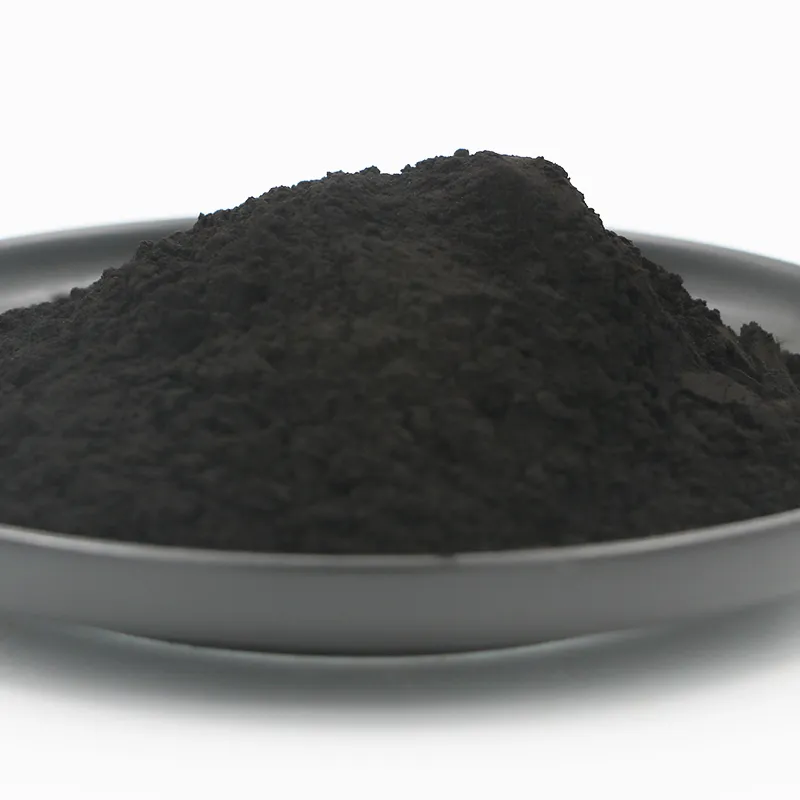In this article, we intend to provide you with information and details about the Gilsonite drilling mud board which is very useful.
Gilsonite drilling mud board
Gilsonite drilling fluid is sometimes known as drilling mud because it frequently resembles mud. Each of these phrases is used frequently in the oil and gas industry. Despite having some favorable effects, this medicine has different negative consequences and environmental impacts. As previously stated, A heavy and viscous fluid combination is known as drilling fluid, sometimes known as drilling mud, is used in oil and gas drilling operations to bring rock cuttings to the surface as well as to lubricate and cool the drill bit. Drilling fluid is often referred to as drilling muck. The drilling mud’s hydrostatic pressure prevents the collapse of unstable strata into the borehole as well as the admission of water from any water-bearing strata encountered. The three basic considerations that often go into deciding the type of fluid that will be utilized in a specific formation are cost, technical performance, and environmental impact. Researchers have even drawn analogies between the role of drilling fluid in oil exploration and extraction operations and the role of blood circulation in the human body. In this connection, the fluid pump represents the heart; the cuttings transferred from the borehole by drilling fluid represent waste materials expelled out of the body via the blood arteries, and the kidneys and lungs represent the mud-cleaning system. Drilling operations are expected to account for between 50 and 80 percent of exploration expenditures and between 30 and 70 percent of all other field development costs in oil exploration and extraction activities. These percentages were calculated by dividing total drilling expenses by total exploration costs. Drilling fluids are commonly classified into three types: synthetic-based drilling fluids, oil-based drilling fluids, and water-based drilling fluids. The most prevalent form is water-based drilling fluid. Water-based drilling fluids are employed in 80 percent of all drilling operations because they are more environmentally friendly and cost-effective than synthetic or oil-based drilling fluids. This is owing to the fact that water-based drilling fluids contribute to the drilling process’s environmental friendliness. When choosing a drilling fluid, there are numerous factors to consider. These factors include the location and type of formation to be drilled, variations in wellbore pressure and temperature, the nature of the formation fluids, such as strength, porosity, and permeability, and other important factors considered when selecting drilling fluids, such as production factors, environmental factors, and safety factors.  Water-based fluids are used in the drilling of approximately 80% of all wells. Fresh water, salt water, brine, saturated brine, and format brine are all examples of fluids. Seawater and freshwater are also alternatives. The type of fluid used will be determined by the circumstances of the well that are expected to be present or the specific depth at which the well is being drilled. Additionally, some commercial bentonite or attapulgite may be added to aid in the control of fluid loss and to increase the effectiveness of hole cleaning. Water-based fluids are classified into two types: those that do not disperse and those that do disperse. Oil-based drilling fluids were created and introduced to the market in the 1960s as a solution to drilling issues. Diesel, mineral oil, or low-toxicity linear olefins and paraffin may be used in the formulation of these goods. The primary viscosifier in most oil-based systems is carefully produced organophilic bentonite, with barite used to boost system density. The emulsified water phase also has an effect on the fluid’s viscosity. Organophilic, lignitic, asphaltic, and polymeric materials are used to aid in the regulation of HP/HT, which stands for high pressure and high temperature. It is likely that the surfactants used for oil-wetting can also work as thinners. Lime is commonly used in oil-based systems to maintain an appropriate pH, promote emulsion stability, and protect against the destructive effects of gases such as hydrogen sulfide and carbon dioxide. One of the most significant benefits of using an oil-based system is that it prevents the growth of shale. The high-salinity water phase keeps sandstone from hydrating, expanding, and sloughing into the wellbore. This is accomplished by preventing water saturation of the shales. Synthetic drilling fluids were created in response to a growing need to reduce the negative impacts of offshore drilling operations on the environment. The invention of these synthetic drilling fluids, however, was not intended to jeopardize the cost-effectiveness of oil-based systems. The collected field data show that synthetic-based drilling fluids outperform diesel and mineral oil-based fluids in terms of drilling performance. This was proved by their ability to readily equal those findings. Some synthetic-based drilling fluid systems are immune from the regulations in many offshore sites that prohibit the release of cuttings drilled with oil-based drilling fluids. These rules were enacted to safeguard the environment.
Water-based fluids are used in the drilling of approximately 80% of all wells. Fresh water, salt water, brine, saturated brine, and format brine are all examples of fluids. Seawater and freshwater are also alternatives. The type of fluid used will be determined by the circumstances of the well that are expected to be present or the specific depth at which the well is being drilled. Additionally, some commercial bentonite or attapulgite may be added to aid in the control of fluid loss and to increase the effectiveness of hole cleaning. Water-based fluids are classified into two types: those that do not disperse and those that do disperse. Oil-based drilling fluids were created and introduced to the market in the 1960s as a solution to drilling issues. Diesel, mineral oil, or low-toxicity linear olefins and paraffin may be used in the formulation of these goods. The primary viscosifier in most oil-based systems is carefully produced organophilic bentonite, with barite used to boost system density. The emulsified water phase also has an effect on the fluid’s viscosity. Organophilic, lignitic, asphaltic, and polymeric materials are used to aid in the regulation of HP/HT, which stands for high pressure and high temperature. It is likely that the surfactants used for oil-wetting can also work as thinners. Lime is commonly used in oil-based systems to maintain an appropriate pH, promote emulsion stability, and protect against the destructive effects of gases such as hydrogen sulfide and carbon dioxide. One of the most significant benefits of using an oil-based system is that it prevents the growth of shale. The high-salinity water phase keeps sandstone from hydrating, expanding, and sloughing into the wellbore. This is accomplished by preventing water saturation of the shales. Synthetic drilling fluids were created in response to a growing need to reduce the negative impacts of offshore drilling operations on the environment. The invention of these synthetic drilling fluids, however, was not intended to jeopardize the cost-effectiveness of oil-based systems. The collected field data show that synthetic-based drilling fluids outperform diesel and mineral oil-based fluids in terms of drilling performance. This was proved by their ability to readily equal those findings. Some synthetic-based drilling fluid systems are immune from the regulations in many offshore sites that prohibit the release of cuttings drilled with oil-based drilling fluids. These rules were enacted to safeguard the environment. 
Gilsonite drilling mud board details
The drilling fluids are made from linear alpha olefins and isomerized olefins, both of which have low kinematic viscosities. This is crucial because viscosity issues are becoming increasingly critical as operators dive deeper into the water. ENVIRONMENTAL IMPACTS Drillers utilize specialized drilling fluids known as muds while drilling exploration and production of oil and gas wells. These fluids aid in well control and the removal of drill cuttings from the drill hole. Muds are also known as drilling slurries. Recently, the drilling industry has developed several types of synthetic-based fluids or synthetic-based fluids that combine the desirable operating qualities of oil-based drilling fluids with the lower toxicity and environmental impact qualities of water-based fluids in response to current global environmental challenges as well as strict international and local regulations on the requirements for the discharge of drilling waste. These synthetic-based fluids combine the advantageous operating characteristics of oil-based drilling fluids with the lower toxicity and environmental effect of water-based fluids. The water-sensitive formation may necessitate the use of both an oil-based fluid and a synthetic-based fluid. It is feasible to appropriately manufacture an oil-based fluid so that it does not enable water to migrate from the fluid into the shale occurrence. However, in the process of creating oil-based drilling fluids, the recognized requirements issued by the American Petroleum Institute (API) must not be breached. Although oil-based fluids are useful in areas prone to shale swelling, they have a negative influence on the environment when the pollutant is discharged and subsequently disseminated into the sea. Because oil-based lubricants are so effective, this can be frustrating. This makes it extremely difficult for aquatic species such as plants and fish to pass through. This will be harmful to the environment in the long run. Furthermore, when consumed by humans, the fish are toxic and potentially hazardous.  Furthermore, the presence of these contaminants during onshore drilling has the potential to have a negative impact on soil quality. This, in turn, has a substantial impact on the chemical makeup of the soil, which has a big impact on both human and wildlife environments. Cuttings scatter less when oil-based cutting fluid is released into the water than when water-based cutting fluid is utilized. This will result in the production of cuttings heaps that will cover diverse sections of the bottom. This condition may have an impact on the animals that live on the seafloor around the rig. Synthetic-based drilling fluids are a relatively new class of drilling muds that have proven to be very useful for deep water and deviated holes. There has lately been the creation of a new category of materials that are used to develop safe and cost-effective oil and gas drilling technologies. Their improved drilling performance reduces drilling time while also giving advantages in terms of safety, human health, and, in some situations, environmental performance when compared to diesel oil fluids. They were created to be a more environmentally friendly and sustainable alternative to oil-based drilling fluids, which motivated their development. CONCLUSION Drilling fluids are one of the most critical items to have on hand for a successful oil and gas drilling operation. Drilling fluids are complex concoctions made up of solids, liquids, chemicals, and even gases at times. From a chemical standpoint, depending on the physical condition of the components, they can have properties comparable to emulsions, colloidal dispersions, or suspensions. Drilling fluids are commonly classified into three types: synthetic-based drilling fluids, oil-based drilling fluids, and water-based drilling fluids. The most prevalent form is water-based drilling fluid. When it comes to the right selection of the drilling fluid, there are a few controlling agents that must be considered. These regulating forces include the type of formation encountered, the formation’s temperature and pressure, as well as ecological and environmental considerations and cost. Despite their effectiveness, oil-based fluids have the potential to harm the surrounding environment when the pollutant they carry is discharged into the air and then taken out to sea. Their improved drilling performance reduces drilling time while also giving advantages in terms of safety, human health, and, in some situations, environmental performance when compared to diesel oil fluids. They were created to be a more environmentally friendly and sustainable alternative to oil-based drilling fluids, which motivated their development.
Furthermore, the presence of these contaminants during onshore drilling has the potential to have a negative impact on soil quality. This, in turn, has a substantial impact on the chemical makeup of the soil, which has a big impact on both human and wildlife environments. Cuttings scatter less when oil-based cutting fluid is released into the water than when water-based cutting fluid is utilized. This will result in the production of cuttings heaps that will cover diverse sections of the bottom. This condition may have an impact on the animals that live on the seafloor around the rig. Synthetic-based drilling fluids are a relatively new class of drilling muds that have proven to be very useful for deep water and deviated holes. There has lately been the creation of a new category of materials that are used to develop safe and cost-effective oil and gas drilling technologies. Their improved drilling performance reduces drilling time while also giving advantages in terms of safety, human health, and, in some situations, environmental performance when compared to diesel oil fluids. They were created to be a more environmentally friendly and sustainable alternative to oil-based drilling fluids, which motivated their development. CONCLUSION Drilling fluids are one of the most critical items to have on hand for a successful oil and gas drilling operation. Drilling fluids are complex concoctions made up of solids, liquids, chemicals, and even gases at times. From a chemical standpoint, depending on the physical condition of the components, they can have properties comparable to emulsions, colloidal dispersions, or suspensions. Drilling fluids are commonly classified into three types: synthetic-based drilling fluids, oil-based drilling fluids, and water-based drilling fluids. The most prevalent form is water-based drilling fluid. When it comes to the right selection of the drilling fluid, there are a few controlling agents that must be considered. These regulating forces include the type of formation encountered, the formation’s temperature and pressure, as well as ecological and environmental considerations and cost. Despite their effectiveness, oil-based fluids have the potential to harm the surrounding environment when the pollutant they carry is discharged into the air and then taken out to sea. Their improved drilling performance reduces drilling time while also giving advantages in terms of safety, human health, and, in some situations, environmental performance when compared to diesel oil fluids. They were created to be a more environmentally friendly and sustainable alternative to oil-based drilling fluids, which motivated their development. 
Buy Gilsonite drilling mud board
At our location, you will have access to a comprehensive selection of Gilsonite drilling mud board. You can choose from a wide range of products, each of which comes in a variety of flavors and colors, all of which are of the highest possible quality. You will be able to make a secure purchase from a reputable online store if you shop for products on our website since we only link to stores that we know and trust. We are able to ship a substantial quantity of these items to a variety of international locations, and the products’ high standards will not be compromised in any way. Contact us for any inquiry regarding purchasing Gilsonite in all mesh sizes and ash content directly from the mine. Read more:




